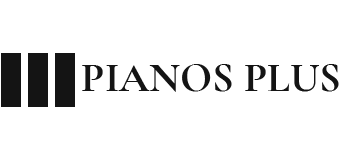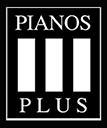A piano buying guide
First Time Piano Buyer
Touch.
The most important aspect of a piano for a beginner is that the touch is even, as an uneven keyboard will cause the student to develop poor dynamics and control in their playing. Old used pianos in our opinion are unsuitable for beginners due to wear and ageing on the action which causes great variances in the response of each note.
Concert Pitch.
Another important factor for the first time buyer is that the piano being purchased must be at concert pitch. This allows the student to develop their aural skills and appreciate the music as it was meant to be heard.
Tone.
The quality of the tone is not so crucial at the early stages of playing but must at least be pleasant to listen to so the student enjoys the music she/he hears.
Prices.
Our basic pianos from Yamaha and Kawai provide the above three requirements.
Uprights:
-Yamaha B1 at €4,395 – suitable for use to approximately grade 5
-Kawai K15 at €4,595 – suitable for use to approximately grade 6/7
Intermediate Piano Buyer
Touch.
As the student progresses through their studies the piano must have a responsive action which will allow for greater dynamic playing.
Tone.
The piano must provide the pianist with a greater range of sound. At this level the music is more complex requiring greater expression.
Size.
The size of the instrument starts to become important at this level of playing. The piano should be between 112cms and 125cms in height. The greater the height of the instrument the greater the depth and volume of the sound produced.
Our mid-range upright pianos from Yamaha and Kawai provide the above three requirements.
Approximate Price Region:
-Uprights from €6,500 to €9,500
-Grands from €12,000 to €20,000
Advanced Piano Buyer
Touch.
Advanced players will pay great attention to the touch of the piano. The superior quality of felts and leathers in the action, will enable the pianist to manipulate the instrument to its full potential.
Tone.
The tonal quality is of great importance at this level. Pianos in this category will typically have double felted mahogany hammerheads, top grade spruce sound boards and strings. These factors not only give a long life to the tone of the piano but also creates the best tonal quality.
Size.
Instruments will typically be from:
-Uprights 125cms –132cms in height
-Grands 5’6” – 9’ in length
Approximate Price Region.
Typically the advanced player will choose her/his own instrument.
-Uprights from €10,500 to €35,000
-Grands from €20,000 to €130,000
Buying a Piano
When deciding to purchase a piano you must decide whether your purchase is short term, intermediate term or long term.
Short Term.
This is where the student could be a beginner and he/she or parents want to take a wait and see approach. The purchase of a piano suitable to bring the player to the mid level grades, which then would be upgraded, if required. Price category €4,500 – €6,500.
Intermediate Term.
Where the student or parent wishes to purchase a piano that will bring the player through most or all their studies, which also could be upgraded, if required. Price category €6,500 – €10,500.
Long Term.
Where the customer has decided to make an investment in a high quality piano, which is intended to be a family asset, to be passed on from one generation to the next. This category of instrument will be suitable for the most advanced students, where a grand piano is not a possibility. Price category €10,500 upwards.
Grand Pianos.
In our opinion, any grand piano purchase should be a long term purchase/investment. An important rule of thumb is to ask yourself the question. ‘For this money would I be better buying an upright piano?’ Our advice is, only consider purchasing a grand piano where the benefits in quality, touch, etc. exceed that of an upright piano for the same price or lesser price. There are many instances where people fall for a piano because it looks good but where, for half the money spent a better quality upright instrument could be purchased. Be prepared to spend from €12,000 upwards on a grand piano.
Upgrading.
When it is time to upgrade your piano, we will allow 80% trade-in allowance on your previous new piano purchase and 60% trade-in allowance on your previous used piano purchase, providing the piano was originally purchased from Pianos Plus.




